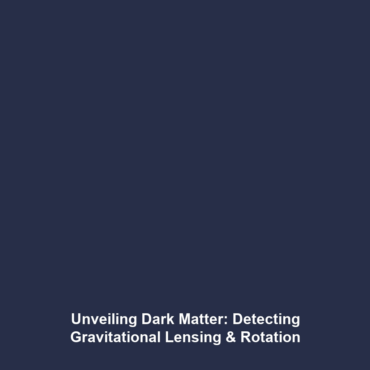<>
Exploring Subtopics in Dark Matter and Dark Energy
Dark Matter and Dark Energy are fundamental components of our universe, forming the backbone of modern astrophysical theories. Within this broad context, the Subtopics associated with these elusive phenomena are crucial for understanding their significance and implications in cosmology. By delving into their complexities, we can uncover insights that may lead to a more comprehensive understanding of the cosmos. This article aims to elaborate on the Subtopics within the realm of Dark Matter and Dark Energy, providing a structured view that highlights their relevance and impact on future astronomical research.
Key Concepts
Subtopic 1: The Nature of Dark Matter
Dark Matter is an unseen entity that constitutes approximately 27% of the universe’s mass-energy content. Theories concerning its composition range from Weakly Interacting Massive Particles (WIMPs) to axions. Understanding these Subtopics helps unravel the complex gravitational effects observed in galaxies and galactic clusters.
Subtopic 2: The Expansion of the Universe
Dark Energy accounts for about 68% of the universe and is responsible for its accelerated expansion. This Subtopic explores the equations governing cosmic expansion and how they align with observable phenomena, such as supernova redshifts and the cosmic microwave background radiation.
Applications and Real-World Uses
The study of Subtopics in Dark Matter and Dark Energy has led to various practical applications in both theoretical and experimental physics. Examples include:
- Astronomical Surveys: Large-scale sky surveys help map the distribution of Dark Matter and inform models of cosmic structure.
- Particle Physics Experiments: Projects like the Large Hadron Collider aim to detect particles that could constitute Dark Matter.
- Cosmology Simulations: Simulations of cosmic evolution enhance our understanding of how Dark Energy affects the universe.
Current Challenges
Despite advancements, challenges remain in the study of Subtopics associated with Dark Matter and Dark Energy. These include:
- Detection Issues: Current methods struggle to directly detect Dark Matter particles.
- Theoretical Discrepancies: Models of Dark Energy’s nature and effects continue to contrast with observations.
- Technological Constraints: Limitations in current detection technologies hinder further exploration.
Future Research and Innovations
Looking ahead, exciting research in Subtopics related to Dark Matter and Dark Energy is on the horizon. Key areas of focus include:
- Next-Generation Observatories: Upcoming telescopes promise higher sensitivity and resolution to capture cosmic events linked to these phenomena.
- Quantum Computing: Innovations in quantum technology may allow for enhanced simulations and data analysis in astrophysics.
- Interdisciplinary Approaches: Collaborations between astrophysicists and particle physicists are expected to yield new insights.
Conclusion
In summary, Subtopics within the fields of Dark Matter and Dark Energy are imperative for enhancing our understanding of the universe. Addressing the existing challenges and embracing future research directions is crucial for unlocking the mysteries surrounding these astronomical enigmas. To further explore these captivating subjects, consider reading about Dark Matter Theories or Cosmic Expansion Dynamics.









